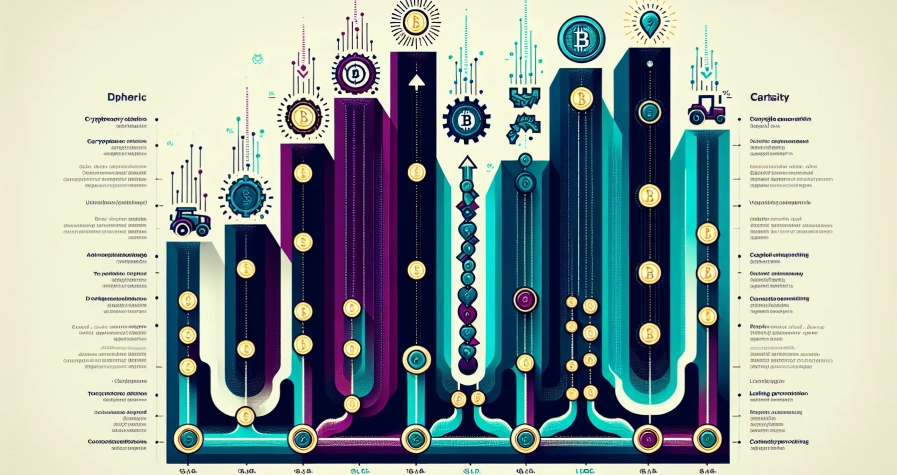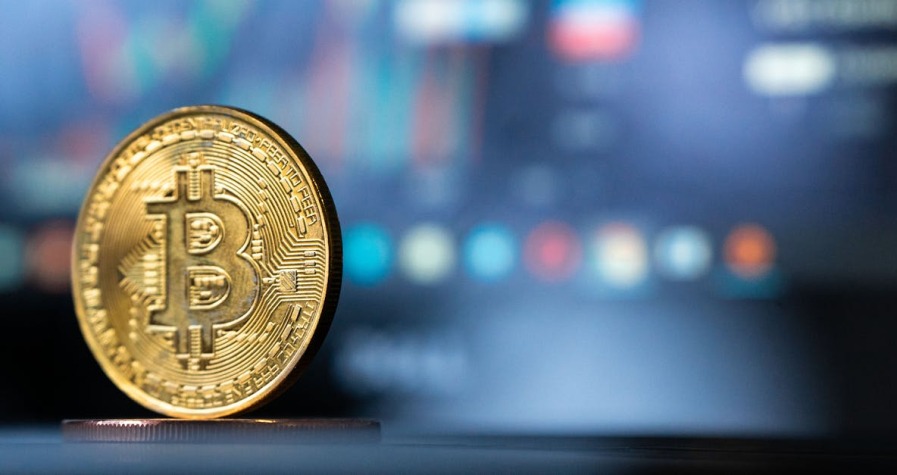The cryptocurrency market is notorious for its wild price swings, where assets can gain or lose double-digit percentages in a matter of hours. For investors navigating this volatile landscape, finding a reliable anchor becomes crucial. That’s where USDC (USD Coin) comes in,a stablecoin that’s gained massive traction among both retail and institutional investors. Unlike Bitcoin or Ethereum, USDC isn’t designed to make anyone rich overnight. Instead, it offers something many consider equally valuable: predictability and utility.
USDC has carved out a unique position in the crypto ecosystem by bridging the gap between traditional finance and digital assets. Backed 1:1 by the US dollar and subject to regular audits, it provides the stability of fiat currency with the speed and flexibility of blockchain technology. Whether traders are looking for a safe harbour during market downturns, DeFi enthusiasts seeking yield opportunities, or businesses facilitating cross-border payments, USDC delivers on multiple fronts. Its combination of regulatory transparency, institutional backing, and seamless integration with decentralized platforms explains why it’s become one of the most widely adopted stablecoins in circulation today.
Key Takeaways
- USDC offers investors stability and utility by maintaining a 1:1 peg to the US dollar, backed by cash and short-term Treasury securities with monthly attestation reports.
- Many investors use USDC as a safe haven during crypto market volatility, allowing them to preserve capital while staying ready to deploy funds instantly.
- USDC enables seamless cross-border transactions that are faster and cheaper than traditional banking, making it ideal for global payments and remittances.
- The stablecoin’s deep integration with DeFi platforms allows investors to earn competitive yields through lending, staking, and liquidity provision on dollar-denominated assets.
- USDC’s regulatory compliance and institutional backing from Circle and Coinbase provide transparency and trust that appeal especially to institutional investors.
- Investors leverage USDC for portfolio diversification and risk management, using it as a stable component to reduce overall volatility in crypto holdings.
What Is USDC and How Does It Work?
USDC, or USD Coin, is a digital stablecoin pegged 1:1 to the US dollar. It was launched in 2018 by the Centre Consortium, a collaboration between Circle and Coinbase,two major players in the cryptocurrency industry. The concept is straightforward: for every USDC token in circulation, there’s an equivalent US dollar held in reserve. This backing mechanism is what keeps USDC’s value stable, hovering consistently around $1.00.
The operational model is relatively simple but highly regulated. When someone wants to acquire USDC, US dollars are deposited with regulated financial institutions that partner with Circle. Once the deposit is verified, an equivalent amount of USDC is minted and issued on the blockchain. The process works in reverse for redemptions,users can burn their USDC tokens to receive US dollars back. This create-and-destroy mechanism ensures the supply of USDC directly corresponds to the amount of fiat currency held in reserve.
What sets USDC apart from many other cryptocurrencies is its commitment to transparency. Circle publishes monthly attestation reports prepared by independent accounting firms, providing detailed breakdowns of the reserves backing USDC. These reports verify that the company holds sufficient assets,primarily cash and short-term US Treasury securities,to cover every token in circulation. This level of oversight isn’t common across all stablecoins and has helped USDC build credibility with investors who prioritize accountability.
USDC operates on multiple blockchain networks, including Ethereum, Solana, Algorand, and several others. This multi-chain presence enhances its accessibility and allows users to choose networks based on their preferences for transaction speed, cost, and ecosystem compatibility. The technical infrastructure behind USDC combines the best of both worlds: the stability and familiarity of traditional currency with the programmability and global reach of blockchain technology.
The Appeal of Stability in Volatile Crypto Markets
One of USDC’s primary draws is its ability to maintain a steady value while everything else in the crypto market seems to be in constant flux. When Bitcoin can drop 15% in a day or altcoins experience gut-wrenching crashes, having access to a dollar-pegged asset provides psychological comfort and strategic flexibility.
Dollar-Pegged Value as a Safe Haven
The 1:1 peg to the US dollar transforms USDC into a digital safe haven. When market sentiment turns bearish and investors want to protect their capital, they face a choice: either convert their crypto holdings back to fiat currency through traditional banking channels, which can be slow and cumbersome, or swap into a stablecoin like USDC. The latter option keeps their funds within the crypto ecosystem, ready to be deployed at a moment’s notice when opportunities arise.
This dynamic plays out countless times during market corrections. Rather than watching portfolio values erode, risk-conscious investors rotate into USDC to preserve purchasing power. They’re not exiting crypto entirely,they’re simply stepping aside temporarily. Once the market stabilizes or attractive entry points emerge, they can quickly move back into growth-oriented assets without the delays associated with bank transfers or fiat on-ramps. USDC essentially functions as digital cash that never sleeps, available 24/7 for instant deployment.
The stability also makes USDC practical for use cases beyond speculation. Merchants accepting cryptocurrency payments often prefer stablecoins because they don’t have to worry about the value of their receivables fluctuating before they can convert to local currency. Freelancers working with international clients can invoice in USDC, knowing the amount they receive today will hold its value tomorrow.
Transparency and Regular Attestations
Transparency isn’t just a buzzword for USDC,it’s a core operational principle. Circle releases detailed attestation reports on a monthly basis, prepared by Grant Thornton LLP, a respected accounting firm. These reports provide an independent verification that USDC is fully backed by reserves held in custody.
The composition of these reserves matters. Unlike some stablecoins that have faced scrutiny over unclear or questionable backing, USDC’s reserves consist primarily of cash deposits and short-term US Treasury securities. These are among the most liquid and secure assets available, reducing concerns about the ability to meet redemption requests during periods of high demand.
This transparency has real consequences for investor confidence. In an industry that’s seen its share of blow-ups,from algorithmic stablecoins collapsing to exchanges becoming insolvent,having verifiable proof of reserves is reassuring. Investors don’t have to take Circle’s word for it: they can review the attestation reports themselves and make informed decisions about whether USDC meets their risk tolerance. This level of disclosure has helped USDC build trust with both retail users and institutional players who require rigorous due diligence before committing capital.
Key Utility Features That Drive Adoption
Stability alone doesn’t explain USDC’s popularity. The stablecoin’s utility,its ability to solve real problems and enable new possibilities,is equally important. USDC isn’t just sitting idle in wallets: it’s actively circulating through various parts of the crypto economy.
Seamless Cross-Border Transactions
Traditional international money transfers can be painfully slow and expensive. Banks often take several business days to process wire transfers, charge substantial fees, and impose restrictions on amounts and destinations. USDC eliminates most of these friction points. Sending USDC from New York to Tokyo takes minutes rather than days, costs a fraction of traditional fees (especially on efficient blockchains like Solana or Polygon), and doesn’t require multiple intermediary banks taking their cut along the way.
This capability has made USDC particularly attractive for businesses engaged in global commerce. Companies can pay suppliers overseas without dealing with currency conversion spreads, wire fees, or banking hours. Remittance services have also started leveraging USDC to offer their customers faster and cheaper ways to send money across borders. For individuals in countries with restricted banking access or unstable local currencies, receiving payments in USDC provides both reliability and access to the broader global financial system.
Integration With DeFi Platforms
Decentralized finance has emerged as one of the most innovative sectors within crypto, and USDC has become its lifeblood. DeFi protocols like Aave, Compound, Uniswap, and Curve rely heavily on stablecoins to function effectively. Users can deposit USDC as collateral to borrow other assets, provide it as liquidity in automated market makers, or lend it out to earn interest,all without intermediaries.
The beauty of USDC in DeFi is that it allows users to earn yield on dollar-denominated assets without leaving the crypto ecosystem. Instead of keeping cash in a traditional savings account earning minimal interest, investors can deploy USDC in various DeFi protocols to generate returns that often exceed what traditional finance offers. The rates fluctuate based on supply and demand within each protocol, but they’ve historically been competitive, particularly during periods of high borrowing demand.
USDC’s widespread acceptance across DeFi platforms also creates composability,the ability to use the same asset across multiple applications seamlessly. An investor might use USDC as collateral on one platform, earn yield on another, and simultaneously provide liquidity on a decentralized exchange. This interconnectedness amplifies USDC’s utility and reinforces its position as the preferred stablecoin for DeFi activities.
Liquidity and Trading Flexibility
For active traders, USDC serves as the primary trading pair on numerous exchanges. Rather than constantly moving between cryptocurrencies and fiat, traders can park their capital in USDC between trades. This preserves their purchasing power while keeping funds instantly deployable. When a trading opportunity emerges,whether it’s a dip in Bitcoin or a breakout in an altcoin,traders can execute immediately without waiting for fiat deposits to clear.
The liquidity depth of USDC pairs is another advantage. Major exchanges maintain substantial USDC trading volumes, which means traders can enter and exit positions with minimal slippage. This liquidity is particularly valuable during volatile market conditions when spreads on less liquid pairs can widen dramatically, potentially costing traders significant money on large orders.
Beyond spot trading, USDC is also used extensively in derivatives markets, margin trading, and options platforms. Its stability makes it ideal for settling contracts and calculating profit and loss without the added complexity of fluctuating collateral values. This versatility across different trading strategies and products has made USDC indispensable for both professional traders and sophisticated investors managing multi-strategy portfolios.
Why Investors Choose USDC Over Other Stablecoins
The stablecoin market isn’t a monopoly. USDC competes with Tether (USDT), Binance USD (BUSD), DAI, and others. Yet USDC has consistently maintained a strong position, particularly among investors who prioritize certain qualities over pure market cap or ubiquity.
Regulatory Compliance and Trust
USDC operates under a framework that emphasizes regulatory compliance,a characteristic that resonates with institutional investors and risk-conscious individuals. Circle, the primary issuer, is a US-based company subject to US financial regulations. It holds money transmitter licenses in multiple states and adheres to know-your-customer (KYC) and anti-money-laundering (AML) requirements.
This regulatory posture contrasts with some competitors that have faced questions about their operational transparency or relationships with banking partners. For institutional investors,hedge funds, asset managers, and corporate treasuries,regulatory clarity isn’t optional. Their compliance departments need assurance that the assets they’re holding meet institutional standards. USDC’s transparent governance and regulatory engagement provide that assurance.
The regulatory environment for stablecoins continues to evolve, with lawmakers and regulators worldwide scrutinizing these assets more closely. USDC’s proactive approach to compliance positions it favorably as regulations mature. Investors betting on long-term viability often prefer assets that are likely to survive and thrive under increased regulatory scrutiny rather than those operating in grey areas.
Institutional Backing and Security
The pedigree behind USDC matters. Circle and Coinbase aren’t anonymous developers or offshore entities,they’re established companies with significant reputations at stake. Circle has raised hundreds of millions in venture capital from top-tier investors, while Coinbase is a publicly traded company subject to SEC oversight. This institutional backing provides an additional layer of confidence.
The reserve management practices further enhance security. USDC reserves are held at regulated US financial institutions, and the choice to invest primarily in cash and short-term Treasuries minimizes credit risk. After the March 2023 banking crisis that saw Silicon Valley Bank fail,where Circle had significant deposits,the company and its partners worked quickly to ensure USDC holders were made whole. While the depegging event was concerning, the rapid resolution demonstrated the robustness of the backing structure and the commitment of the issuing entities.
Investors also appreciate that both Circle and Coinbase have strong incentives to maintain USDC’s integrity. Their business models depend on trust, and any failure of USDC would be catastrophic for their broader operations. This alignment of incentives gives investors confidence that the stablecoin will be managed conservatively and that any issues will be addressed swiftly.
Practical Use Cases for USDC in Investment Strategies
Beyond its foundational attributes, USDC enables specific investment strategies that would be difficult or impossible with traditional assets or more volatile cryptocurrencies.
Portfolio Diversification and Risk Management
Crypto portfolios can swing dramatically in value, sometimes gaining or losing 50% or more in a matter of weeks. Sophisticated investors use USDC as a stabilizing component within their broader allocations. By maintaining a portion of their portfolio in USDC, they reduce overall volatility and create a buffer against market downturns.
This approach is similar to holding cash in traditional portfolios, but with added flexibility. When market conditions deteriorate, investors can increase their USDC allocation to protect capital. When opportunities arise,whether through technical breakouts, fundamental developments, or market dislocations,they can deploy that USDC quickly. This dynamic allocation strategy allows investors to be more tactical and responsive than they could be with fiat currency sitting in bank accounts.
Some investors also use USDC to carry out dollar-cost averaging strategies. Rather than trying to time market bottoms perfectly, they convert a fixed amount of USDC into their target assets at regular intervals. This disciplined approach reduces the emotional component of investing and smooths out entry prices over time. Having USDC readily available makes executing this strategy seamless, without the friction of repeatedly funding accounts through traditional banking channels.
Earning Yield Through Staking and Lending
One of USDC’s most compelling features is the ability to generate yield. In traditional finance, cash equivalents earn minimal returns,often less than inflation. USDC opens up multiple avenues for earning competitive yields on what is essentially a dollar-denominated asset.
Centralized platforms like BlockFi, Celsius (before its collapse), and now more conservative options like Coinbase’s USDC rewards, offer interest on USDC deposits. Rates vary based on market conditions and platform risk profiles, but they’ve historically exceeded traditional savings accounts. Of course, these platforms carry their own risks, as the industry learned painfully when several high-profile lenders failed in 2022.
Decentralized lending protocols offer an alternative that many investors consider more transparent. Platforms like Aave and Compound allow users to deposit USDC into smart contract-based lending pools, where borrowers pay interest to access that liquidity. The rates fluctuate with supply and demand but are algorithmically determined and publicly visible. Users maintain custody of their funds through non-custodial wallets and can withdraw at any time, subject to liquidity availability.
Liquidity provision is another yield strategy. Investors can deposit USDC into decentralized exchange liquidity pools, earning a portion of trading fees generated by that pair. For example, providing liquidity to a USDC/ETH pool on Uniswap earns fees whenever traders swap between those assets. This strategy involves additional considerations like impermanent loss, but for stablecoin pairs (like USDC/USDT or USDC/DAI), the risk is relatively contained.
These yield opportunities transform USDC from a passive parking spot into an active investment tool. Investors can earn returns on capital that would otherwise sit idle, all while maintaining the stability and liquidity they need for opportunistic deployments.
Risks and Considerations When Using USDC
Even though its many advantages, USDC isn’t without risks. Investors should understand the potential downsides before committing significant capital.
Regulatory risk remains a consideration. While USDC’s compliance-forward approach is generally viewed as a strength, regulatory frameworks for stablecoins are still evolving. Future regulations could impose restrictions on issuance, require additional reserves, or even prohibit certain uses. Changes in regulatory treatment could impact USDC’s utility or accessibility, particularly if regulations vary significantly across jurisdictions.
Depegging risk, though rare, is real. The March 2023 incident when USDC briefly fell below $1 after Circle disclosed exposure to Silicon Valley Bank demonstrated that even well-managed stablecoins can experience temporary instability. While USDC recovered quickly and holders were eventually made whole, the episode illustrated that reserve management and banking relationships matter. If reserves become impaired or if there’s a crisis of confidence, USDC could deviate from its peg, at least temporarily.
Counterparty risk is inherent in USDC’s model. Unlike decentralized stablecoins that rely on over-collateralized crypto assets and smart contracts, USDC depends on Circle and its banking partners to manage reserves properly and honour redemptions. Users are trusting that these entities will act responsibly and that the financial institutions holding reserves remain solvent. This centralized dependency is a tradeoff for the stability and regulatory clarity USDC provides.
Smart contract risk affects USDC when it’s deployed in DeFi applications. Bugs or vulnerabilities in protocol code could potentially result in loss of funds, even though USDC itself operates soundly. Users should carefully evaluate the security audits and track records of any DeFi platforms they use with their USDC.
Inflation risk is worth mentioning as well. Since USDC is pegged to the US dollar, it’s subject to the same inflationary pressures that affect fiat currency. In environments where inflation is elevated, holding USDC means purchasing power gradually erodes unless that capital is deployed in yield-generating strategies that outpace inflation.
Understanding these risks doesn’t mean avoiding USDC,it means using it appropriately within a well-thought-out strategy. Most investors find that USDC’s benefits outweigh its risks when used for its intended purposes: stability, liquidity, and utility within the crypto ecosystem.
Conclusion
USDC has established itself as more than just another cryptocurrency,it’s become essential infrastructure for the digital asset economy. Its appeal stems from a combination of stability, transparency, regulatory alignment, and versatility that few other assets can match. For investors navigating the unpredictable crypto markets, USDC offers a reliable anchor point that doesn’t sacrifice accessibility or utility.
The stablecoin’s adoption continues to grow as both retail and institutional participants recognise its value. Whether facilitating cross-border payments, serving as collateral in DeFi protocols, providing a safe harbour during market turbulence, or enabling yield strategies on dollar-denominated capital, USDC delivers practical solutions to real problems. Its integration across multiple blockchains and platforms ensures it remains accessible wherever users need it.
Looking ahead, USDC’s emphasis on compliance and transparency positions it well as regulatory frameworks mature. While risks exist,from potential depegging events to evolving regulations,the stablecoin’s track record and institutional backing provide reasonable confidence in its continued viability. For investors seeking stability and utility in their crypto strategies, USDC represents a compelling option that bridges traditional finance and the decentralized future. As the crypto ecosystem evolves, assets that combine reliability with functionality will likely remain at its centre, and USDC has proven it belongs in that category.
Frequently Asked Questions
What is USDC and why do investors prefer it over other cryptocurrencies?
USDC is a stablecoin pegged 1:1 to the US dollar, offering price stability unlike volatile cryptocurrencies. Investors prefer it for predictable value, regulatory transparency through monthly attestations, and utility in trading, DeFi, and cross-border payments without leaving the crypto ecosystem.
How does USDC maintain its $1 peg to the US dollar?
USDC maintains its peg through a reserve backing system where every token is backed by an equivalent US dollar held in regulated financial institutions. When USDC is minted, dollars are deposited; when redeemed, tokens are burned, ensuring supply matches reserves.
Can I earn interest on USDC holdings?
Yes, investors can earn yield on USDC through multiple channels including centralized platforms offering interest accounts, DeFi lending protocols like Aave and Compound, or by providing liquidity to decentralized exchanges. Rates vary based on market conditions and platform risks.
What are the main risks of holding USDC?
Key risks include regulatory changes affecting stablecoin operations, potential temporary depegging during banking crises, counterparty risk from Circle and banking partners, smart contract vulnerabilities in DeFi applications, and inflation eroding purchasing power of the underlying dollar.
How does USDC compare to Tether (USDT) for stability and trust?
USDC emphasizes regulatory compliance with monthly attestation reports from independent accounting firms and reserves held primarily in cash and US Treasuries. This transparency and US-based regulatory oversight appeals to institutional investors prioritizing accountability over competitors with less disclosure.
Why is USDC popular for cross-border payments and remittances?
USDC enables international transfers in minutes rather than days, costs significantly less than traditional wire transfers, and avoids multiple intermediary banks. This makes it attractive for global businesses, remittance services, and individuals in countries with restricted banking access.






